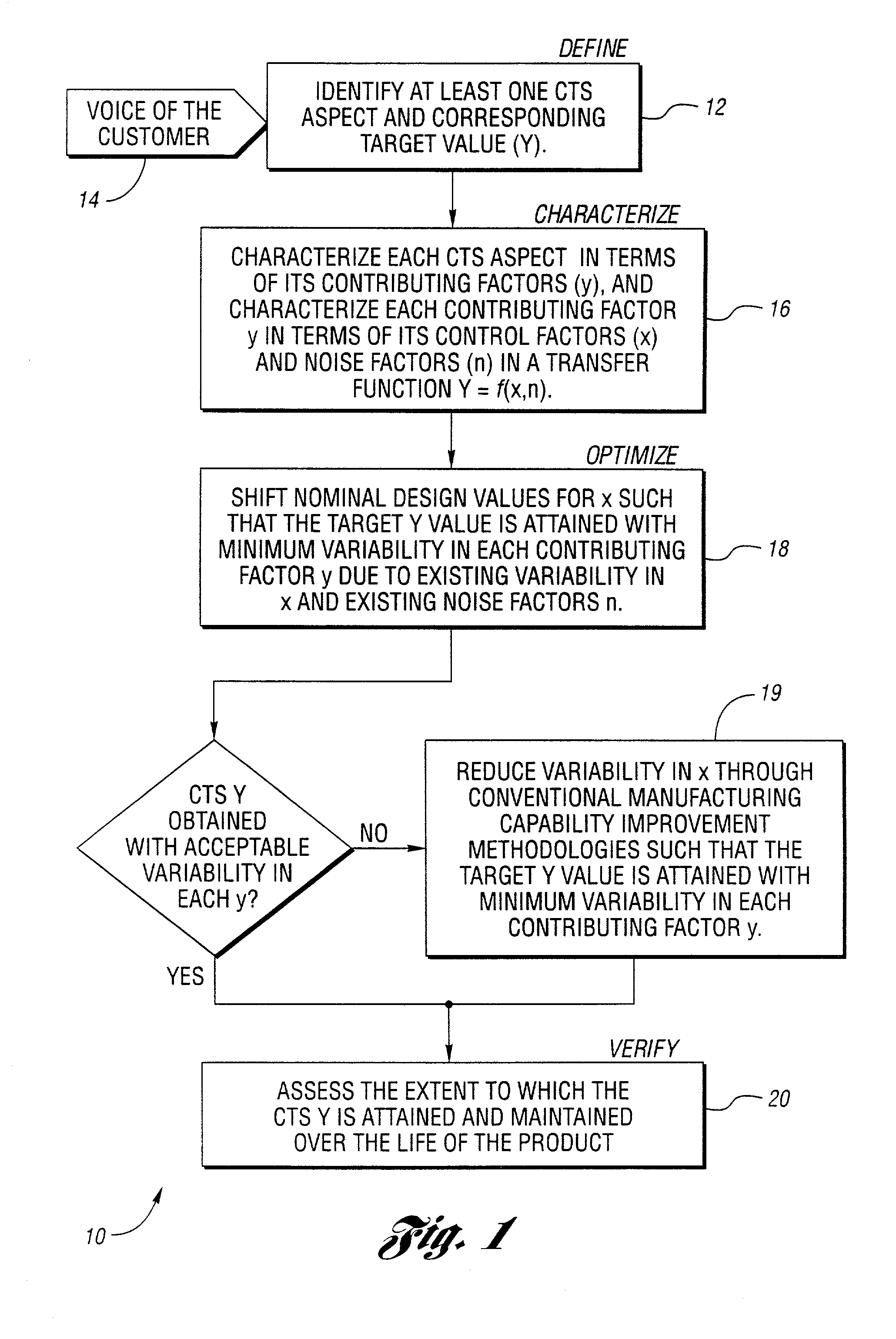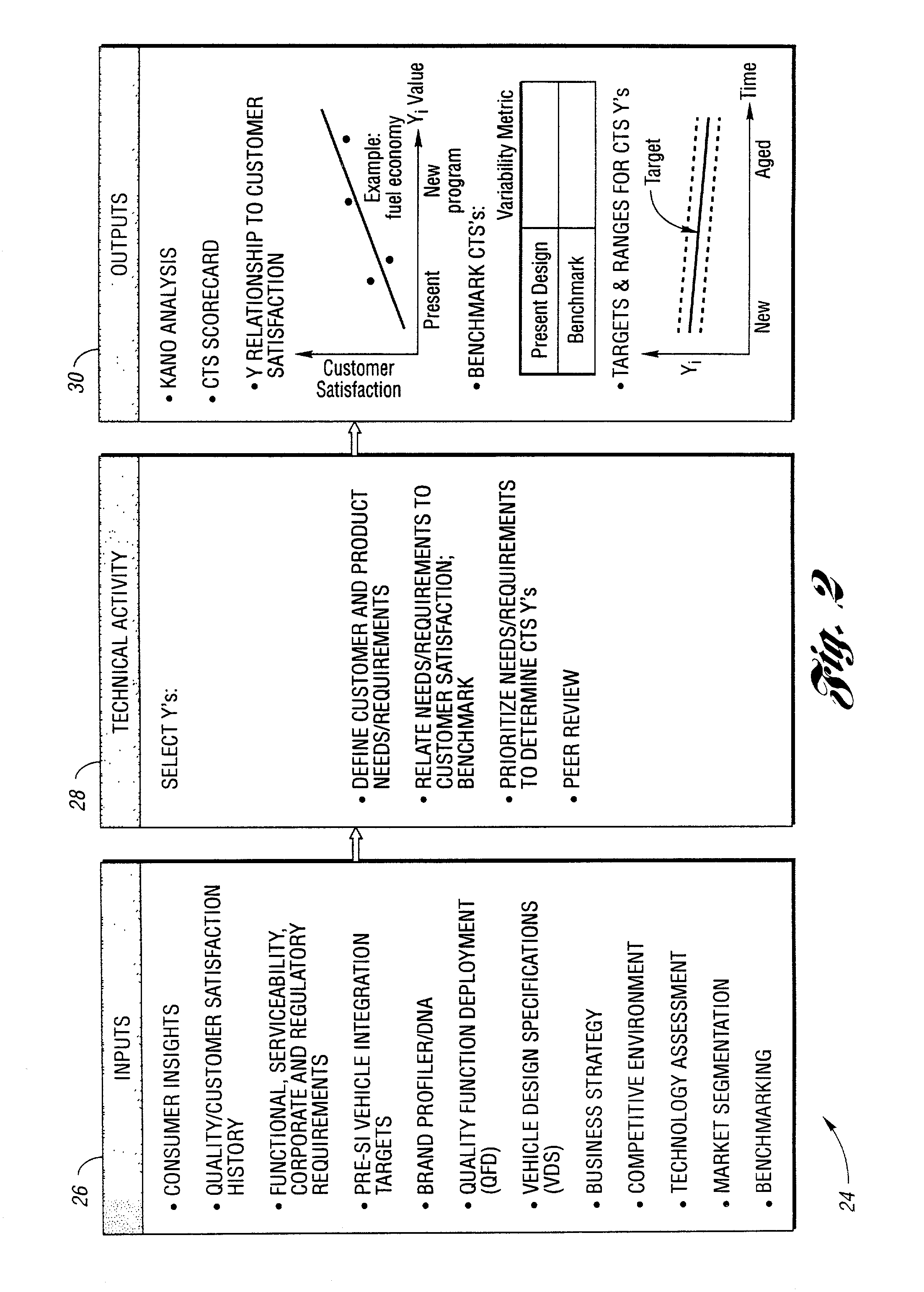Method and system for product optimization
a product optimization and optimization method technology, applied in the field of sixsigma (6) optimization models, can solve the problems of reducing the product robustness of the product, limiting the product success of the manufacturer, and not incorporating the design aspect of the optimization, so as to achieve a higher level of customer satisfaction
- Summary
- Abstract
- Description
- Claims
- Application Information
AI Technical Summary
Benefits of technology
Problems solved by technology
Method used
Image
Examples
Embodiment Construction
[0052]FIG. 1 is a block flow diagram illustrating an overview of a preferred method 10 for implementing the present invention. As represented in block 12, a “Define” aspect of the present invention identifies at least one aspect of a product that is critical to customer satisfaction (CTS) based on an analytical assessment of the “voice of the customer”14. Preferably, the CTS aspect is reduced to a quantified value Y preferred by the customer base. “Value” Y, however, is not limited to discretely or numerically quantifiable values. Y may include qualitative descriptions, notions, or otherwise, which are identifiable forms or arrangements of CTS aspects which are based on the voice of the customer.
[0053]As represented in block 16, a “Characterize” aspect of the present invention qualitatively and / or quantitatively characterizes each CTS aspect in terms of its contributing factors (y), and characterizes each contributing factor y in terms of its significant control factors (x) and nois...
PUM
 Login to View More
Login to View More Abstract
Description
Claims
Application Information
 Login to View More
Login to View More - R&D
- Intellectual Property
- Life Sciences
- Materials
- Tech Scout
- Unparalleled Data Quality
- Higher Quality Content
- 60% Fewer Hallucinations
Browse by: Latest US Patents, China's latest patents, Technical Efficacy Thesaurus, Application Domain, Technology Topic, Popular Technical Reports.
© 2025 PatSnap. All rights reserved.Legal|Privacy policy|Modern Slavery Act Transparency Statement|Sitemap|About US| Contact US: help@patsnap.com



